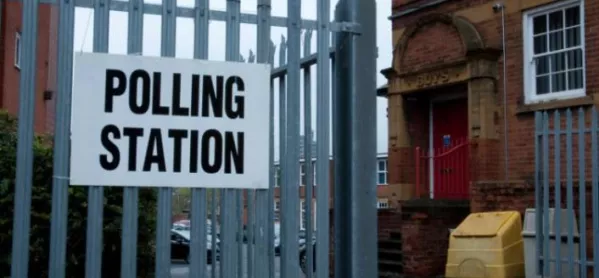
- Home
- One year on: The 2017 election’s impact on schools
One year on: The 2017 election’s impact on schools

For schools, the 2017 general election will be remembered for what did not happen - thanks to Theresa May’s disastrous decision to go to the country.
When the prime minister announced the snap poll in April 2017, her stated reason was Brexit, but it was equally clear that she would seek a mandate for her signature domestic policy: the creation of the first new grammar schools for generations.
It was a move that promised to shake up England’s schools landscape in a way not even Michael Gove’s academy and free -chool reforms had managed.
But after the votes were counted a year ago today, it turned out that, while the election did have significant implications for schools, it was not in the way the prime minister had envisaged.
The Conservatives campaigned on an election manifesto that promised to “lift the ban on the establishment of selective schools”.
When she triggered the ballot, Ms May appeared to be all-but-assured of an increased Commons majority, which would have allowed her to make this promise a reality.
In the event, grammar schools had a surprisingly low profile in the six weeks that followed. But with Ms May having too little to say about Brexit to sustain the campaign, other domestic issues filled the vacuum.
Along with a self-inflicted wound of the “dementia tax”, school funding caused Ms May one of her biggest headaches.
Campaign against school cuts
Much of the credit for this goes to the school cuts campaign that was spearheaded by the unions, and it later emerged that the NUT had spent more money than UKIP during the election.
The School Cuts website that this money funded told parents how much their child’s school was set to lose, and although the government disputed the figures, it proved enormously effective.
The effort was aided by the fact that, despite Justine Greening’s efforts behind the scenes, the Tory manifesto failed to protect real-terms per-pupil funding.
Post-election analysis suggested that only the performance of the party leaders, Brexit and social care policy were more important election issues than school funding, and that 750,000 voters may have changed their vote because of the issue - largely to the benefit of Labour.
Another Conservative education pledge proved costly at the ballot box: the promise to scrap universal free school meals for infants, and replace them will free breakfasts for all primary school pupils.
As we all know, the election did not go Theresa May’s way: her dream of new grammar schools went the same way as her Commons majority, and universal infant free school meals remain the law of the land.
Last month’s confirmation of £50 million to fund the expansion of existing selective schools next year was a pale shadow of Ms May’s original intentions.
Putting aside the things that did not happen, what else did the 2017 general election mean for schools and education policy?
Ironically, given the Conservative manifesto, it led to more money for schools, at least in the short term.
Ms Greening won Treasury permission to reallocate £1.3 billion of existing DfE funds to schools over two years, in order to keep real-terms per-pupil funding stable over that period.
However, the Institute for Fiscal Studies said this still represented a real-terms 4.6 per cent cut between 2015 and 2019, and whether schools will win more money in the longer term will depend on the upcoming government spending review.
The shock of Jeremy Corbyn’s gains at the election, and the perception that voters were tired of austerity, also contributed to the government abandoning the 1 per cent public sector pay cap.
This did not mean a larger pay rise for teachers this year, but it leaves scope for a larger increase to be announced in the coming weeks. The teachers’ pay review body has submitted its report for 2018-19 to the DfE, which says it will publish the report and its response “as soon as possible”.
The key issue will not just be what pay rise teachers receive, but whether the government gives schools the money to fund it.
Politically, the election result weakened Ms May, and strengthened Ms Greening, at least temporarily.
Before the election, there was widespread speculation the prime minister wanted a new education secretary who was more supportive of her grammar school policy.
Shorn of her majority, Ms May was too weak to sack Ms Greening, who subsequently had more freedom to concentrate on her personal priority of improving social mobility, without the unwanted grammar school baggage.
And even when, seven months later, the prime minister did force Ms Greening from the DfE, her decision to return to the backbenches rather than accept a different cabinet job left the PM looking weak.
For schools, the 2017 election will be remembered for the things the prime minister wanted to do but could not, and the things she did not want to do but then did.
Register with Tes and you can read five free articles every month, plus you'll have access to our range of award-winning newsletters.
Keep reading for just £4.90 per month
You've reached your limit of free articles this month. Subscribe for £4.90 per month for three months and get:
- Unlimited access to all Tes magazine content
- Exclusive subscriber-only stories
- Award-winning email newsletters
You've reached your limit of free articles this month. Subscribe for £4.90 per month for three months and get:
- Unlimited access to all Tes magazine content
- Exclusive subscriber-only stories
- Award-winning email newsletters



